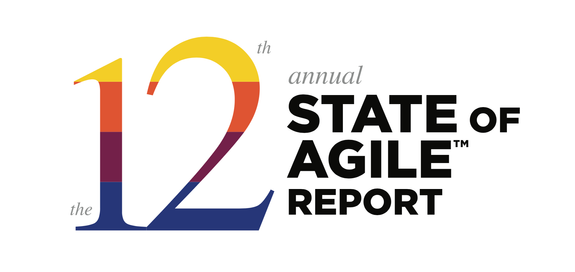Community resources
Community resources
Top 10 Insights from the 12th Annual State of Agile Report
It's been a year in the making.
The results of the 12th Annual State of Agile Survey are in and over the last week we've poured over the findings,
Here are our Top 10 most fascinating finds from this year's report.
----
- Finally! Customer/User Satisfaction was ranked as the top measure for the success of agile initiatives (57% up from 44% last year) and the success of agile projects (46%). We’re finally seeing organisation’s put their customer’s success at the core of their journey to greater agility.
- The Scaled Agile Framework® (SAFe)® was reported as the most widely-used approach to scaling agile, with nearly 1/3 (29%) of respondents saying it was the method that they “follow most closely”. We’ve seen the decreasing popularity of Scrum of Scrums over the last few years and we’re putting it down to the marketing muscle and $$ poured into the SAFe® approach.
- For the first time in 6 years, respondents did not cite the same 3 benefits of adopting agile, which historically were: ability to manage changing priorities, increased team productivity and improved project visibility. This year we saw Business/IT alignment taking out the 3rd top spot. We’re thrilled to see that the benefits of adopting agile are literally speaking to the Principles of the Agile Manifesto — “business people and developers must work together daily throughout the project.”
- Atlassian’s Jira (58%) continues to be the most used agile management tool for the second year in a row since dethroning Excel in the 11th State of Agile Report. We had previously seen Excel’s popularity steadily declining, however it remained stagnant from 2016 to 2017, with 46% of respondents using it as their default agile project management tool.
- We’re continually seeing that the leading cause of failed agile projects, is that an organisation’s culture is at odds with agile values. This shows the disparity between organisation’s belief that agile is something you do, rather than it being something you are! Adopting agile processes and rituals does not make a company agile, agile is a mindset and this stat illustrates that.
- The practice of story mapping continues to grow year over year as an effective agile technique with 44% of respondents citing that they practice story mapping, up from 35% last year. As story mapping evangelists here at Easy Agile, seeing this number grow year on year is the validation this agile technique deserves. Story mapping allows us as an organisation, to put our customers at the very centre of everything we do by truly understanding their journey through our products.
- The application of agile techniques to higher-level planning also saw an increase in popularity, with more respondents practicing Product Roadmapping (46%) and Agile Portfolio Planning (35%). It is interesting to note here that Product Roadmapping was not a technique documented in these reports until last year — way to go Roadmaps!
- Fragmented tooling and inconsistent processes across teams were the top 2 challenges organisation’s experience in their efforts to adopt and scale agile. Many people associate agility with complete flexibility. And that’s not necessarily true, as demonstrated by this finding. Consistency across tools and processes enables an organisation to optimise the whole. It’s not that agile at scale needs structure per se, yet that structure can assist, promote and encourage agility.
- For the second year in a row, 98% of respondents had success with agile projects in their organisation. Those are the kinds of numbers we expect to see! I hope this encourages those organisation’s out there hesitant to start their own journey to agility.
- Only 12% of respondents to the survey stated that their organisation’s have a high level of agile maturity. 59% of respondents however, acknowledged that they are still maturing. This is encouraging news, acknowledging their maturity level indicates their willingness to continue to invest in their journey to greater agility.
----
We're interested to hear about your own organisation's journey to agility. What has your team found most effective? Are there aspects of this report that you strongly agree or disagree with? We want to hear from you!
If you want to check out the full report, you can visit it here: 12th Annual State of Agile Report
Was this helpful?
Thanks!
Teagan

About this author
Head of Product
Easy Agile
Wollongong, NSW 2500
6 accepted answers
Atlassian Community Events
- FAQ
- Community Guidelines
- About
- Privacy policy
- Notice at Collection
- Terms of use
- © 2024 Atlassian






1 comment